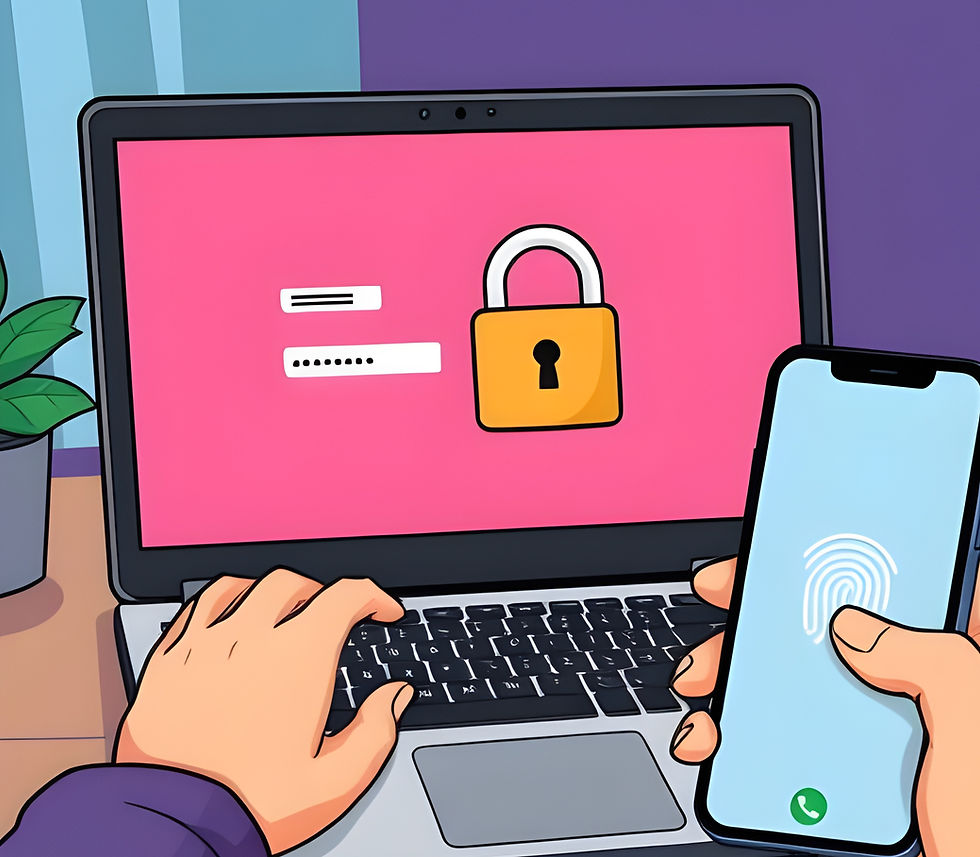How MCP is Changing the Game for AI Agents — And Why OAuth is Key to Keeping it Secure
- Pranami Jhawar
- Apr 14
- 4 min read

Imagine telling your AI assistant, “Book me a flight using my calendar and preferences,” and it just… does it. That’s the future we’re heading toward, thanks to something called the Model Context Protocol (MCP) — a new standard helping AI agents connect with external tools and services in a smart, safe way.
But with this power comes a challenge: How do we secure those connections without opening up sensitive data to risk? That’s where OAuth and Azure API Management (APIM) step in.
Let’s break it all down.
🤖 What Is MCP and Why It Matters
MCP stands for Model Context Protocol, and it's quickly becoming the standard for how AI agents (like ChatGPT plugins or GitHub Copilot) connect to the world around them — things like calendars, files, APIs, or databases.
These agents are powered by large language models (LLMs) and need access to real-world data to complete tasks. MCP provides a universal structure to help them:
Understand what external tools are available
Know how to interact with them
Use them safely and consistently
Without MCP, developers often build custom integrations for each tool, which is time-consuming, error-prone, and not scalable.
Why MCP is Gaining Traction
As AI agents become more common — in IDEs, chat apps, customer service bots, and more — the need to standardize how they connect to external tools has exploded.
Enter Anthropic, the team behind Claude, who introduced MCP as an open-source standard. Their goal? Make it easier to integrate tools into AI systems without reinventing the wheel each time.
What Does the MCP Ecosystem Look Like?
Let’s simplify the moving parts:
MCP Hosts: Where the AI agent lives (e.g., VS Code, a chat app)
MCP Clients: Messengers inside the agent that talk to tools
MCP Servers: Mini-apps that expose tools (like databases or APIs) to the agent
MCP Protocol: The rules and pathways that connect all these pieces
MCP uses a client-server architecture, so AI agents (the clients) can talk to different servers to access different tools.
Two Ways MCP Works:
Local Servers: Everything runs on your machine — fast, simple, but limited.
Remote Servers: The tool lives online and talks to your agent over the internet — powerful, flexible, but it requires real security.

⚠️ But There’s a Catch — The Security Challenge
The more MCP grows, the more important it is to protect what AI agents can access. Here’s why:
These agents may use tools to access sensitive data (like your personal calendar or company files).
Each remote tool must confirm the user is authorized to use it.
Developers need to manage who can do what, and make sure unauthorized access is blocked.
Recently, a change in the MCP spec made this even more complex — the MCP server now acts as both the resource server and the authorization server. That’s like being both the gate and the keymaster. Powerful? Yes. Confusing and risky? Also yes.
Enter OAuth: How We Secure MCP for AI Agents
To keep things secure, we use a protocol that’s already trusted and widely used: OAuth. 👉 New to OAuth? Start here with my intro guide.
OAuth is the gold standard for:
Authentication: Proving who you are
Authorization: Getting permission to access specific resources 👉 Confused about the difference? Check out my post on Authentication vs Authorization.
For MCP, OAuth ensures that:
AI agents don’t get unlimited access
Users stay in control
Tools are accessed safely and with proper consent
Meet APIM: Your OAuth Gateway for MCP and AI Agents
Azure API Management (APIM) is Microsoft’s enterprise-grade platform for managing APIs. Think of it as a smart, secure front door to your backend services. It helps:
Control who can access your APIs
Add authentication and rate-limiting
Monitor usage and performance
In the context of MCP, APIM acts as the OAuth gateway, helping authorize AI agents before they access sensitive tools or data.
At my day job, we built a secure gateway using APIM to handle OAuth flows for MCP servers.
Here’s how it works:
The AI agent (via the MCP client) sends a request through APIM.
APIM redirects the user to Microsoft Entra ID (formerly Azure AD) to sign in and approve access.
Entra sends back an access token to APIM.
APIM uses that token to create a secure session with the MCP server.
The MCP client then talks to the MCP server — safely and with all permissions verified.

This setup is especially useful in real-world implementations of MCP with OAuth, where AI agents must access secure APIs or data stores without exposing sensitive credentials
Want to Build One Yourself?
If you're technical (or just curious), we’ve shared a complete sample on GitHub that shows how to:
Build a remote MCP server using Azure Functions
Secure it with OAuth
Use APIM as your authentication gateway
Looking for a More Technical Version?
If you're a developer or architect looking for a deeper dive into architecture diagrams, OAuth token flows, and implementation details—check out the more technical version of this blog that I published on Microsoft Tech Community:
🧠 Final Thoughts
The Model Context Protocol is revolutionizing how AI agents interact with tools—but like any powerful technology, it comes with risk. By using OAuth and APIM, we can make sure those connections are:
Safe ✅
Scalable ✅
User-approved ✅
This is just the beginning. As MCP adoption grows, so will the need for trusted identity and authorization layers. OAuth is—and will continue to be—a foundational piece of that story.
Whether you're just exploring agent frameworks or building enterprise-grade systems, mastering how MCP, OAuth, and AI agents work together will be key to building secure, future-ready AI products.
📚 New to OAuth or still fuzzy on the basics?





Comments